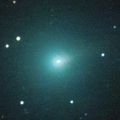
|
Now it is very bright as 10.4 mag (Dec. 15, Marco Goiato). It is observable in good condition in the Northern Hemisphere. It locates low in the Southern Hemisphere. It will be fading after January.
Date(TT) R.A. (2000) Decl. Delta r Elong. m1 Best Time(A, h)
Dec. 23 12 53.27 4 48.1 1.225 1.444 80 10.7 5:34 (327, 55)
Dec. 30 13 10.54 3 52.6 1.206 1.468 83 10.9 5:37 (333, 56)
|
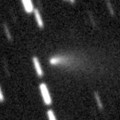
|
Now it is very bright as 11.7 mag (Dec. 21, Katsumi Yoshimoto). It will approach to Earth down to 0.2 a.u., and to Sun down to 0.6 a.u., and it is expected to brighten up to 10-11 mag from winter to spring. In the Northern Hemisphre, it stays observable in good condition until January, but it will be extremely low after that. In the Southern Hemisphere, it is not observable from January to mid March, but it stays observable in good condition except for that period.
Date(TT) R.A. (2000) Decl. Delta r Elong. m1 Best Time(A, h)
Dec. 23 8 40.81 14 7.8 0.438 1.356 142 12.2 2:36 ( 0, 69)
Dec. 30 8 2.96 34 37.9 0.277 1.245 157 10.9 1:33 ( 0, 88)
|
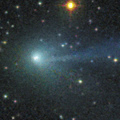
|
Now it is bright as 10.8 mag (Dec. 14, Chris Wyatt). It will stay bright as 11 mag for a long time from winter to next spring. In the Southern Hemisphere, it stays observable in good condition until February. In the Northern Hemispehre, it stays observable for a long time after this until the comet fades out.
Date(TT) R.A. (2000) Decl. Delta r Elong. m1 Best Time(A, h)
Dec. 23 4 35.16 11 29.4 2.054 2.978 155 11.3 22:26 ( 0, 67)
Dec. 30 4 26.43 13 32.6 2.063 2.943 147 11.3 21:50 ( 0, 69)
|
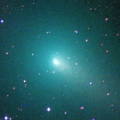
|
It brightened up to 8.1 mag in autumn (Oct. 3, Juan Jose Gonzalez). Now it is fading. It has already faded down to 12.9 mag (Dec. 19, Toshihiko Ikemura, Hirohisa Sato). It is observable all night in the Northern Hemisphere. In the Northern Hemisphere, it stays observable in excellent condition for a long time. In the Southern Hemisphere, it will never be observable again after this.
Date(TT) R.A. (2000) Decl. Delta r Elong. m1 Best Time(A, h)
Dec. 23 23 35.06 86 1.6 1.147 1.777 112 11.6 18:23 (179, 39)
Dec. 30 23 56.70 85 44.3 1.213 1.829 112 12.0 18:28 (179, 39)
|
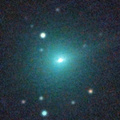
|
Now it is 11.2 mag (Dec. 4, Thomas Lehmann). It is observable in good condition in the Northern Hemisphere. It locates very low for a long time in the Southern Hemisphere. It will be fading after this.
Date(TT) R.A. (2000) Decl. Delta r Elong. m1 Best Time(A, h)
Dec. 23 14 15.44 -2 46.3 1.488 1.295 59 11.9 5:34 (308, 38)
Dec. 30 14 35.75 -4 22.0 1.496 1.330 60 12.4 5:37 (312, 38)
|
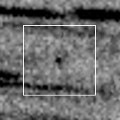
|
Now it is 16.2 mag (Dec. 9, Ken-ichi Kadota). It will brighten very rapidly, and brighten up to 11 mag from January to February. In the Northern Hemisphere, it stays observable for a long time in the evening sky. In the Southern Hemisphere, it locates extremely low at the highlight.
Date(TT) R.A. (2000) Decl. Delta r Elong. m1 Best Time(A, h)
Dec. 23 20 52.36 -10 43.7 1.578 1.070 41 13.3 18:23 ( 59, 21)
Dec. 30 21 19.19 -9 51.4 1.534 1.025 41 12.8 18:28 ( 61, 21)
|

|
It brightened up to 7.1 mag from May to June (June 21, Juan Jose Gonzalez). Now it is fading. It has already faded down to 13.5 mag (Dec. 7, Chris Wyatt). In the Southern Hemisphere, it stays observable for a long time after this. It will never be observable again in the Northern Hemisphere.
Date(TT) R.A. (2000) Decl. Delta r Elong. m1 Best Time(A, h)
Dec. 23 20 38.08 -55 27.6 3.582 2.935 42 13.0 18:23 ( 30,-13)
Dec. 30 20 57.95 -54 47.6 3.671 3.001 41 13.1 18:28 ( 31,-14)
|
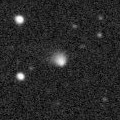
|
Now it is 13.6 mag (Dec. 18, Toshihiko Ikemura, Hirohisa Sato). It is expected to brighten up to 12 mag from 2018 to 2019. In the Northern Hemisphere, it stays observable in good condition while the comet will be brightening gradually. In the Southern Hemisphere, it is not observable until 2018 October.
Date(TT) R.A. (2000) Decl. Delta r Elong. m1 Best Time(A, h)
Dec. 23 15 37.75 51 13.9 3.421 3.414 81 13.6 5:34 (230, 45)
Dec. 30 15 41.31 52 47.9 3.314 3.372 84 13.5 5:37 (228, 49)
|

|
Now it is 14.7 mag (Dec. 15, Toshihiko Ikemura, Hirohisa Sato).
Date(TT) R.A. (2000) Decl. Delta r Elong. m1 Best Time(A, h)
Dec. 23 21 29.40 -12 22.9 6.391 5.803 49 13.8 18:23 ( 51, 26)
Dec. 30 21 33.98 -11 57.8 6.472 5.801 43 13.8 18:28 ( 56, 22)
|
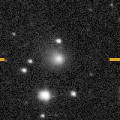
|
Now it is 13.7 mag (Nov. 14, Gabor Santa). It is expected to brighten up to 10 mag in summer in 2018. In the Northern Hemisphere, it stays observable until 2018 summer while the comet will be brightening. However, it will be extremely low from December to January. In the Southern Hemisphere, it is hardly observable in 2017, but it will be observable in good condition in 2018.
Date(TT) R.A. (2000) Decl. Delta r Elong. m1 Best Time(A, h)
Dec. 23 18 8.63 9 30.4 4.154 3.371 32 14.1 18:23 (101, 1)
Dec. 30 18 15.50 8 24.9 4.110 3.317 31 14.0 5:37 (262, 4)
|
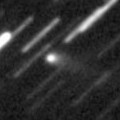
|
Now it is 14.0 mag (Dec. 13, Chris Wyatt). It stays 14 mag for a while. In the Southern Hemisphere, it stays observable in good condition until spring in 2018. It is getting higher gradually also in the Northern Hemisphere.
Date(TT) R.A. (2000) Decl. Delta r Elong. m1 Best Time(A, h)
Dec. 23 1 38.88 -50 33.3 1.825 2.007 85 14.1 19:31 ( 0, 5)
Dec. 30 1 45.33 -45 42.1 1.836 2.003 84 14.1 19:10 ( 0, 10)
|
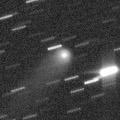
|
Now it is 14.2 mag (Nov. 14, Artyom Novichonok). It will be observable at 14 mag for a long time from 2017 to 2018. In the Southern Hemisphere, it will be hardly observable after this. It will be extremely low from November to December in the Northern Hemisphere.
Date(TT) R.A. (2000) Decl. Delta r Elong. m1 Best Time(A, h)
Dec. 23 16 29.40 21 49.8 4.308 3.765 50 14.5 5:34 (261, 26)
Dec. 30 16 31.74 22 48.7 4.234 3.757 55 14.4 5:37 (263, 32)
|
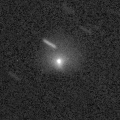
|
Brian Skiff found a bright outburst on Dec. 7. It brightened up to 13.2 mag (Dec. 11, Seiichi Yoshida). It stays bright as 13.3 mag still now (Dec. 20, Toshihiko Ikemura, Hirohisa Sato). This is the 4th outburst following those in January 2006, May 2011 and August 2016. It stays observable in good condition for a while.
Date(TT) R.A. (2000) Decl. Delta r Elong. m1 Best Time(A, h)
Dec. 23 2 36.38 11 17.0 6.673 7.333 129 14.7 20:28 ( 0, 66)
Dec. 30 2 35.62 11 15.6 6.785 7.350 121 15.1 20:00 ( 0, 66)
|
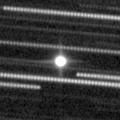
|
It approached to Earth down to 0.07 a.u. in mid December, and it brightened up to 10.4 mag (Dec. 15, Thomas Lehmann). Now it is fading rapidly. It has already faded down to 13.2 mag (Dec. 19, Seiichi Yoshida). It will fade out down to 18 mag soon, and it will be too low to observe soon.
Date(TT) R.A. (2000) Decl. Delta r Elong. m1 Best Time(A, h)
Dec. 23 21 34.63 -12 48.2 0.131 0.907 50 14.7 18:23 ( 50, 25)
Dec. 30 20 42.28 -23 38.3 0.250 0.774 28 17.9 18:28 ( 57, 4)
|
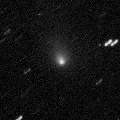
|
It brightened very rapidly up to 13.8 mag in August (Aug. 22, kunihiro Shima). After that, it is fading gradually. Now it is 15.0 mag (Dec. 19, Martin Masek). It is observable in excellent condition in the Southern Hemisphere. It stays low for a while in the Northern Hemisphere.
Date(TT) R.A. (2000) Decl. Delta r Elong. m1 Best Time(A, h)
Dec. 23 0 9.81 -21 27.5 2.322 2.404 82 15.2 18:23 ( 6, 34)
Dec. 30 0 16.44 -19 24.8 2.378 2.381 78 15.3 18:28 ( 13, 35)
|
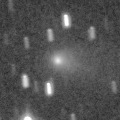
|
Now it is 15.6 mag (Dec. 19, Toshihiko Ikemura, Hirohisa Sato). It brightened rapidly. It is observable in good condition in the Northern Hemisphere. It locates low in the Southern Hemisphere.
Date(TT) R.A. (2000) Decl. Delta r Elong. m1 Best Time(A, h)
Dec. 23 5 8.66 40 18.3 1.209 2.158 159 15.2 23:00 (180, 85)
Dec. 30 5 3.64 40 10.6 1.259 2.187 154 15.4 22:27 (180, 85)
|
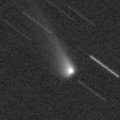
|
Now it is 15.6 mag (Dec. 13, Toshihiko Ikemura, Hirohisa Sato). It stays observable at 15-16 mag for a long time from 2017 to 2018.
Date(TT) R.A. (2000) Decl. Delta r Elong. m1 Best Time(A, h)
Dec. 23 0 13.44 1 6.6 4.111 4.267 92 15.4 18:23 ( 8, 56)
Dec. 30 0 11.70 0 8.6 4.248 4.268 84 15.4 18:28 ( 22, 53)
|
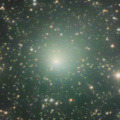
|
It brightened up to 10 mag from spring to summer. Now it is fading. It has already faded down to 14.7 mag (Dec. 13, Thomas Lehmann). It is observable in excellent condition in the Southern Hemisphere. It locates low in the Northern Hemisphere.
Date(TT) R.A. (2000) Decl. Delta r Elong. m1 Best Time(A, h)
Dec. 23 22 15.62 -18 54.1 2.584 2.229 58 15.6 18:23 ( 36, 27)
Dec. 30 22 28.75 -17 22.2 2.690 2.267 54 15.8 18:28 ( 41, 26)
|

|
Now it is 15.0 mag (Nov. 22, Sandor Szabo). It stays 17 mag in 2018.
Date(TT) R.A. (2000) Decl. Delta r Elong. m1 Best Time(A, h)
Dec. 23 3 14.16 -1 13.1 5.654 6.352 131 15.8 21:06 ( 0, 54)
Dec. 30 3 13.15 -1 5.9 5.766 6.382 125 15.9 20:37 ( 0, 54)
|
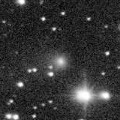
|
Now it is 15.3 mag (Dec. 17, Toshihiko Ikemura, Hirohisa Sato). In the Northern Hemisphere, it stays 15 mag until winter, and it is observable in excellent condition. It is not observable at all after this in the Southern Hemisphere.
Date(TT) R.A. (2000) Decl. Delta r Elong. m1 Best Time(A, h)
Dec. 23 19 59.38 61 57.4 3.211 3.332 88 15.8 18:23 (145, 41)
Dec. 30 20 5.30 62 12.0 3.252 3.352 87 15.9 18:28 (146, 38)
|
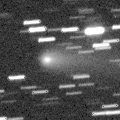
|
It brightened up to 12.2 mag in August (Aug. 21, Juan Jose Gonzalez). It is fading now. It has already faded down to 15.5 mag (Dec. 13, Toshihiko Ikemura, Hirohisa Sato).
Date(TT) R.A. (2000) Decl. Delta r Elong. m1 Best Time(A, h)
Dec. 23 8 4.35 13 31.0 1.310 2.217 150 15.8 1:59 ( 0, 68)
Dec. 30 7 56.54 14 33.9 1.329 2.274 159 16.0 1:24 ( 0, 69)
|
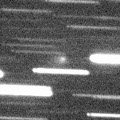
|
Now it is 15.6 mag (Nov. 22, Sandor Szabo). It stays observable at 16 mag for a long time until summer in 2018. It is observable in good condition in the Northern Hemisphere in 2017, and in the Southern Hemisphere in 2018.
Date(TT) R.A. (2000) Decl. Delta r Elong. m1 Best Time(A, h)
Dec. 23 23 5.73 30 35.8 1.491 1.787 90 15.9 18:23 ( 82, 71)
Dec. 30 22 58.01 25 21.1 1.620 1.742 79 16.0 18:28 ( 79, 61)
|

|
Now it is 16.5 mag (Dec. 18, Toshihiko Ikemura, Hirohisa Sato). It stays 16-17 mag for a long time from 2016 to 2019. It stays near by the equator.
Date(TT) R.A. (2000) Decl. Delta r Elong. m1 Best Time(A, h)
Dec. 23 10 34.30 4 3.1 9.157 9.574 112 15.9 4:29 ( 0, 59)
Dec. 30 10 34.32 4 10.1 9.054 9.576 119 15.9 4:01 ( 0, 59)
|
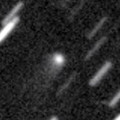
|
Now it is 15.6 mag (Dec. 13, Toshihiko Ikemura, Hirohisa Sato). It stays 16 mag for a long time from 2017 to 2018. It is observable in excellent condition in the Northern Hemisphere. It locates very low in the Southern Hemisphere.
Date(TT) R.A. (2000) Decl. Delta r Elong. m1 Best Time(A, h)
Dec. 23 8 55.56 31 42.1 4.527 5.332 141 16.0 2:50 ( 0, 87)
Dec. 30 8 48.67 33 10.6 4.466 5.335 149 16.0 2:16 ( 0, 88)
|
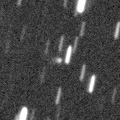
|
Now it is 16.5 mag (Dec. 15, Toshihiko Ikemura, Hirohisa Sato). It will brighten up to 9 mag in 2018 summer. However, it is hardly observable when it is bright. In the Northern Hemisphere, it is observable only until March when it brightens up to 14 mag. In the Southern Hemisphere, it is observable from July to September in 2018, but it locates in extremely low.
Date(TT) R.A. (2000) Decl. Delta r Elong. m1 Best Time(A, h)
Dec. 23 22 26.04 59 58.1 2.938 3.238 98 16.4 18:23 (151, 58)
Dec. 30 22 38.01 57 37.1 2.911 3.156 95 16.3 18:28 (144, 57)
|
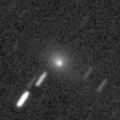
|
Return of a new periodic comet which brightened up to 13 mag in 2004. It brightened rapidly up to 14.3 mag (Nov. 15, Catalina Sky Survey). Now it is fading. It has already faded down to 16.5 mag (Dec. 17, Toshihiko Ikemura, Hirohisa Sato).
Date(TT) R.A. (2000) Decl. Delta r Elong. m1 Best Time(A, h)
Dec. 23 2 21.91 18 38.4 1.060 1.838 128 16.3 20:14 ( 0, 74)
Dec. 30 2 27.53 19 52.8 1.137 1.861 122 16.6 19:52 ( 0, 75)
|

|
Now it is 16.5 mag (Dec. 17, Toshihiko Ikemura, Hirohisa Sato). It will be observable at 16 mag in good condition from winter to spring.
Date(TT) R.A. (2000) Decl. Delta r Elong. m1 Best Time(A, h)
Dec. 23 11 52.11 8 34.2 3.293 3.539 96 16.5 5:34 (353, 63)
Dec. 30 11 55.49 8 28.3 3.192 3.538 102 16.4 5:22 ( 0, 63)
|
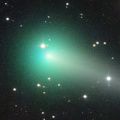
|
It brightened up to 6.2 mag in April (Apr. 7, Juan Jose Gonzalez). Now it is fading rapidly. It has already faded down to 15.5 mag (Dec. 20, Thomas Lehmann). It stays observable for a long time after this.
Date(TT) R.A. (2000) Decl. Delta r Elong. m1 Best Time(A, h)
Dec. 23 2 43.10 15 43.7 2.614 3.354 132 16.5 20:35 ( 0, 71)
Dec. 30 2 42.49 15 33.6 2.773 3.431 124 16.7 20:07 ( 0, 71)
|

|
It stays 15 mag from 2018 to 2019, and it will be observable for a long time in the Southern Hemisphere. In the Northern Hemisphere, it will never be observable again.
Date(TT) R.A. (2000) Decl. Delta r Elong. m1 Best Time(A, h)
Dec. 23 13 47.79 -45 13.5 5.704 5.214 55 16.7 5:34 (338, 5)
Dec. 30 13 52.63 -46 36.3 5.592 5.177 60 16.6 5:37 (343, 5)
|
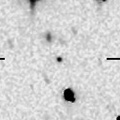
|
Now it is 16.8 mag (Dec. 20, Toshihiko Ikemura, Hirohisa Sato). It will be observable at 16.5 mag in good condition in winter.
Date(TT) R.A. (2000) Decl. Delta r Elong. m1 Best Time(A, h)
Dec. 23 9 59.31 -9 31.8 2.331 2.874 113 16.6 3:54 ( 0, 45)
Dec. 30 9 59.43 -10 55.7 2.287 2.902 119 16.6 3:26 ( 0, 44)
|
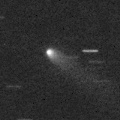
|
Now it is 16.9 mag (Dec. 13, Toshihiko Ikemura, Hirohisa Sato). It will be fading after this, and it will be fainter than 18 mag in March.
Date(TT) R.A. (2000) Decl. Delta r Elong. m1 Best Time(A, h)
Dec. 23 0 59.15 17 30.4 2.562 3.028 108 16.7 18:51 ( 0, 73)
Dec. 30 1 2.81 17 46.6 2.668 3.042 102 16.9 18:28 ( 0, 73)
|
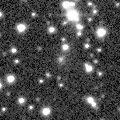
|
Now it is 16.5 mag (Dec. 18, Toshihiko Ikemura, Hirohisa Sato). It will pass the perihelion in 2019. However, it has not been brightening since the discovery in 2010. It is observable in good conditioin in the Northern Hemisphere. It is not observable for a long time in the Southern Hemisphere.
Date(TT) R.A. (2000) Decl. Delta r Elong. m1 Best Time(A, h)
Dec. 23 6 31.70 76 26.9 8.193 8.819 126 16.8 0:29 (180, 49)
Dec. 30 6 22.97 76 40.8 8.187 8.807 126 16.8 23:47 (180, 48)
|
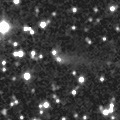
|
Now it is 16.9 mag (Dec. 13, Toshihiko Ikemura, Hirohisa Sato). In the Northern Hemisphere, it will be observable at 17 mag in excellent condition from autumn to winter. It locates low in the Southern Hemisphere.
Date(TT) R.A. (2000) Decl. Delta r Elong. m1 Best Time(A, h)
Dec. 23 5 14.24 35 59.6 2.296 3.250 163 16.8 23:05 (180, 89)
Dec. 30 5 9.53 35 50.7 2.340 3.270 157 16.9 22:33 (180, 89)
|
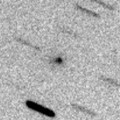
|
Now it is 17.1 mag (Dec. 21, Katsumi Yoshimoto). It stays observable at 17 mag in good condition for a while. It will be fainter than 18 mag in May.
Date(TT) R.A. (2000) Decl. Delta r Elong. m1 Best Time(A, h)
Dec. 23 14 0.39 -5 15.4 2.461 2.170 61 16.8 5:34 (313, 38)
Dec. 30 14 12.17 -5 58.1 2.416 2.199 65 16.9 5:37 (319, 40)
|
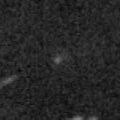
|
Now it is 18.2 mag (Dec. 19, Toshihiko Ikemura, Hirohisa Sato). It will be fading slowly after this.
Date(TT) R.A. (2000) Decl. Delta r Elong. m1 Best Time(A, h)
Dec. 23 11 59.09 -12 37.1 2.787 2.895 86 17.3 5:34 (354, 42)
Dec. 30 12 1.30 -13 10.1 2.734 2.947 92 17.4 5:28 ( 0, 42)
|
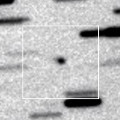
|
Now it is 16.9 mag (Dec. 22, Toshihiko Ikemura, Hirohisa Sato). It stays observable at 18 mag for a long time until 2019.
Date(TT) R.A. (2000) Decl. Delta r Elong. m1 Best Time(A, h)
Dec. 23 6 20.60 18 25.3 6.988 7.967 173 17.7 0:16 ( 0, 73)
Dec. 30 6 14.55 18 12.7 6.986 7.962 172 17.7 23:38 ( 0, 73)
|
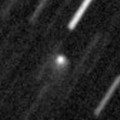
|
Now it is 17.8 mag (Nov. 23, H. Nohara). It was observed at 17 mag in former 2017. It will be observable at 18 mag in good condition from winter to spring.
Date(TT) R.A. (2000) Decl. Delta r Elong. m1 Best Time(A, h)
Dec. 23 12 54.49 2 33.8 5.390 5.302 79 17.9 5:34 (328, 53)
Dec. 30 12 54.61 3 26.4 5.280 5.321 87 17.9 5:37 (339, 57)
|
|
![]()
![]()




































